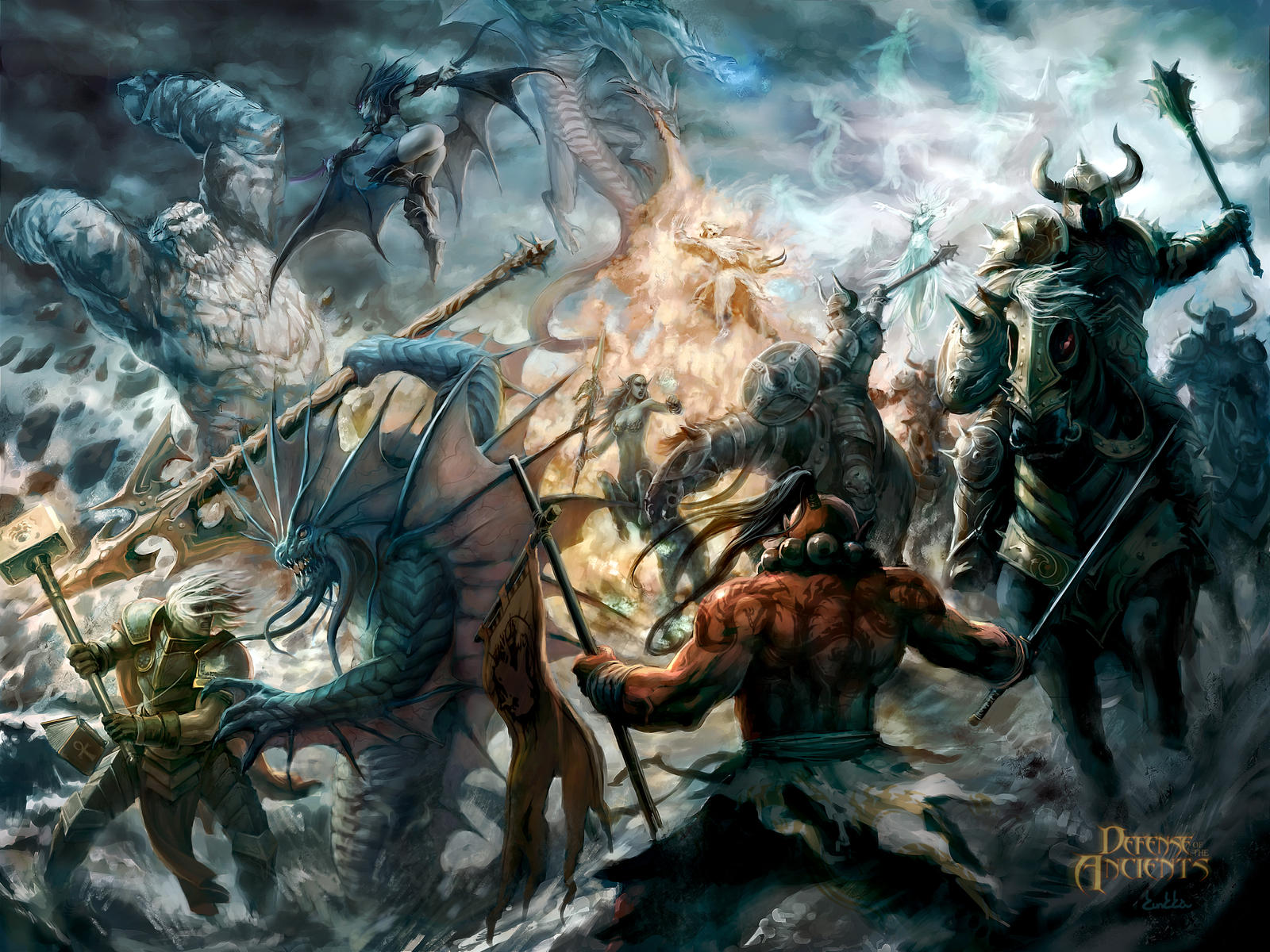Defense of the Ancients
The scenario was developed with the "World Editor" of Warcraft III: Reign of Chaos, and was updated upon the release of its expansion, The Frozen Throne. There have been many variations of the original concept; the most popular being DotA Allstars, which eventually was simplified to DotA with the release of version 6.68. This specific scenario has been maintained by several authors during development, with the current publicly anonymous developer known as "IceFrog" developing the game since 2005.
Since its original release, DotA has become a feature at several worldwide tournaments, including Blizzard Entertainment's BlizzCon and the AsianWorld Cyber Games, as well as the Cyberathlete Amateur and CyberEvolution leagues; Gamasutra declared that DotA was perhaps the most popular "free, non-supported game mod in the world". Valve Corporation is currently developing a sequel, Dota 2.
Gameplay
Defense of the Ancients pits two teams of players against each other: the Sentinel and the Scourge. Players on the Sentinel team are based at the southwest corner of the map, and those on the Scourge team are based at the northeast corner. Each base is defended by towers and waves of units which guard the main paths leading to their base. In the center of each base is the "Ancient", a building that must be destroyed to win the game.
Each human player controls one Hero, a powerful unit with unique abilities. In DotA, players on each side choose one of 104 heroes, each with different abilities and tactical advantages over other heroes. The scenario is highly team-oriented; it is difficult for one player to carry the team to victory alone.Defense of the Ancients allows up to ten players in a five-versus-five format and an additional two slots for referees or observers, often with an equal number of players on each side.
Because the gameplay revolves around strengthening individual heroes, it does not require one to focus on resource management and base-building, unlike most traditional real-time strategy games. Killing computer-controlled or neutral units earns the player experience points; when enough experience is accumulated, the player gains a level. Leveling up improves the hero's toughness and the damage it can inflict, and allows players to upgrade their spells or skills. In addition to accumulating experience, players also manage a single resource: gold. The typical resource-gathering of Warcraft III is replaced by a combat-oriented money system; in addition to a small periodic income, heroes earn gold by killing hostile units, base structures, and enemy heroes. This has caused emphasis on a technique called "last-hitting," which is when the player attacks a hostile unit when "its hit points are low enough to kill it with one blow". Using gold, players buy items to strengthen their hero and gain abilities; certain items can be combined with recipes to create more powerful items. Buying items that suit one's hero is an important tactical element of the scenario. Item choice also affects play style, as any given item may increase one statistic (for example, attack per minute) while leaving another (damage per attack) alone.
DotA offers a variety of game modes, selected by the game host at the beginning of the match. The game modes dictate the difficulty of the scenario, as well as whether people can choose their hero or are assigned one randomly. Many game modes can be combined (for example, an easy difficulty level and a random hero pick), allowing more flexible options.



